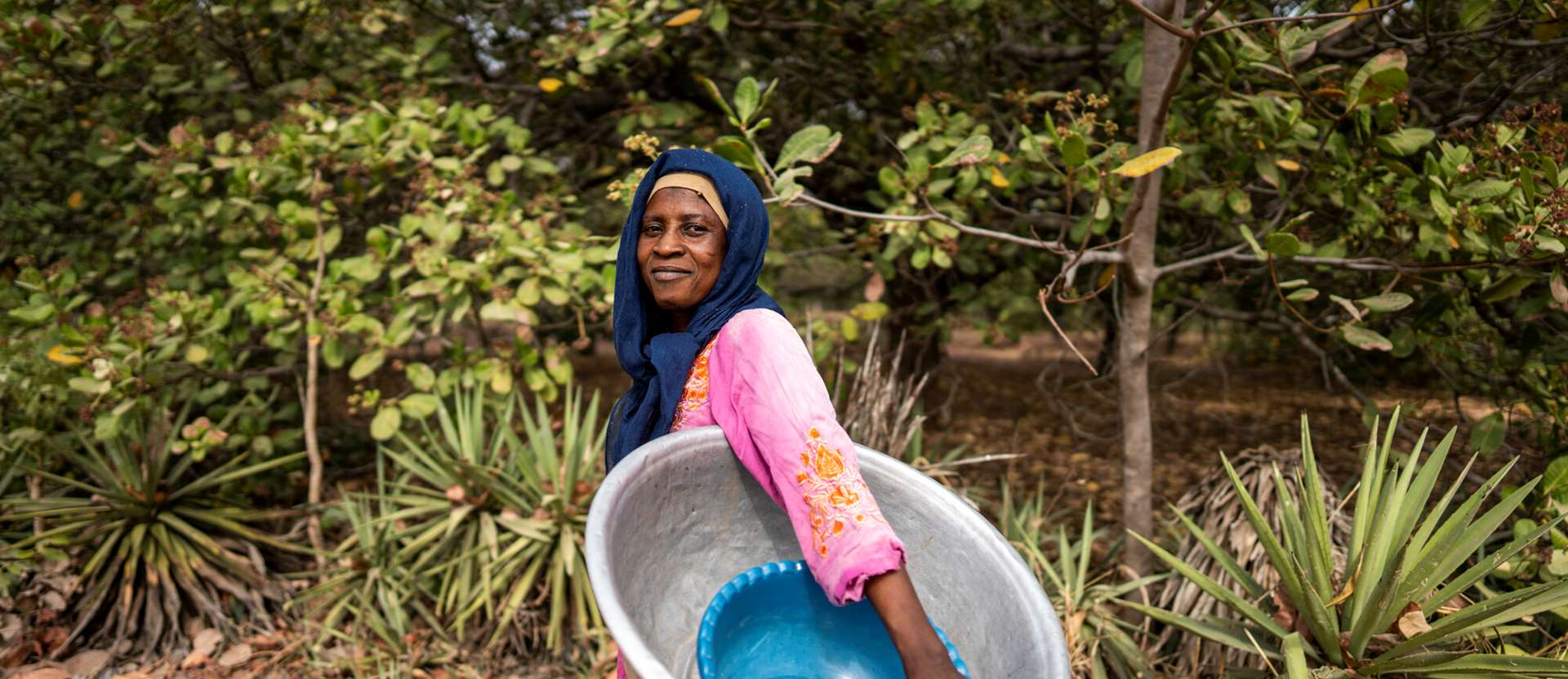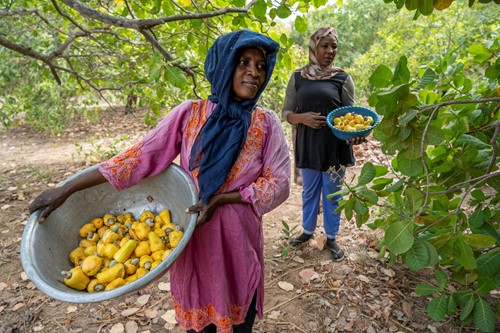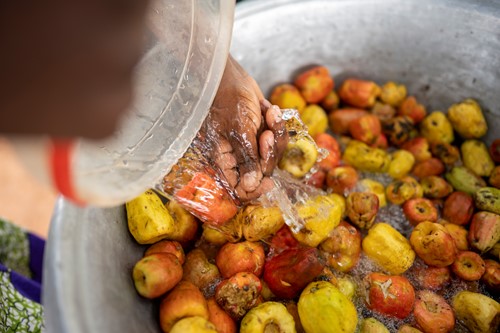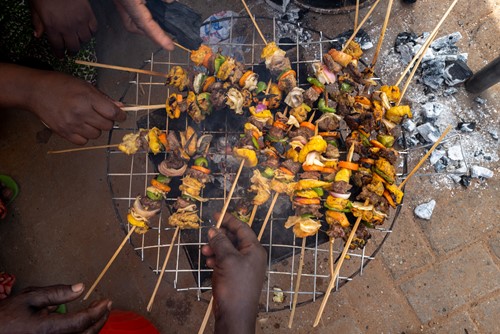
Ayishetu's story
Growing trees and knowledge with farmers in Ghana“Cashew has changed my life” a smiling Ayishetu tells us, on a filmmaking visit to Ghana in February 2022...
We’ve been working with Ayishetu for a number of years, as part of our work growing cashew trees and restoring land in the country’s West Gonja region.
“Before I got into cashew, I had no other job. I used to pick shea nuts when they were in season, and I used to sell them. I also used to pick firewood or work as a farmhand on other people’s farm. Life was really difficult then.”
Ayishetu’s story of hardship is a familiar one – many of the women we work with in rural Ghana are struggling to earn an income to pay for food, medicine and schooling. Quality of life is poor and, as a result, they feel anxious and lonely, and are very dependent on their husbands.

Image: Ayishetu picking cashew fruits in her local cashew orchard
West Gonja is an area well-known for its cashew trees, referred to as the country’s ‘cashew belt’, yet the impacts of the climate crisis are making this crop harder to produce. The land is severely degraded, and between 1990 and 2020, Ghana lost nearly 2million ha of forest. 35% of the land is now under threat of desertification. Ayishetu told us:
“In these parts of Ghana, the impact of climate change is something we deal with everyday. Due to our weather the cashew fruits don’t get as big as they get in the south. The moment the trees start flowering, the hot sun kills most of the flowers, and we end up with fewer fruits. We see the cashew trees starting with a lot of flowers but the sun scorches some to death so we only get a few fruits.”
As a high-value crop, cashews offer a solution to many of the economic hardships that Ayishetu is facing – but is there a way for them to thrive again in the face of the worsening climate crisis.
Introducing: climate-smart cashew farming
“Now, we know every part of the cashew is useful. Even the dried cashew leaves, we use for mulching and fertilizer on the field to help young cashew trees grow well. I’ve got all this training to take care of my children from cashew.”
Our work with farmers like Ayishetu has been centred around the principles of ‘climate-smart agriculture’ (CSA) – a way of farming focused on restoring land to ensure trees and crops can survive long into the future, despite unpredictable weather patterns.
Cashew trees are naturally drought-hardy yet, as Ayishetu explained, they cannot continue truly flourish in degraded soils and harsh sun without protection. CSA uses techniques like composting and agroforestry to revitalise the land, growing crops like legumes alongside the cashew trees which provide mutual benefits, and offer more diverse ways to earn an income.
Support, from seed to sale:
“You can imagine how much more comes in when you add all the other products I can now make from cashew – now we know every part of the [tree] is useful.” For Ayishetu, it’s the diverse uses of the cashew which make this tree so appealing.
We’ve been brainstorming with communities, to develop products from every part of the cashew tree – not just the nuts. As well as using the fallen leaves for compost, Ayishetu is now harvesting the ‘cashew apple’ – which had previously just been used as livestock feed, to make more delicious products to sell at market.
“Now, I know how to properly prepare and roast the nuts, and I also sell the juice. I sometimes make soup from the nuts - it looks and tastes a lot like groundnut (peanut butter) soup. You can spread the cashew butter in bread, it’s very delicious. If you have a sweet tooth, you can actually make jam from the juice. You have to add some cups of sugar to it before boiling. If there’s any flavour you like, you can add it to the jam. The jam sells very well – people like spreading it on bread.”

Image: Cashew apples being washed and prepared for processing
From jams, to juice, the cashew apple has revolutionised market stalls in the area, with a range of delicious new products on offer. Cashew kebabs are a particular favourite - “it is really delicious. We put it on a stick, grill and sell it at the market. People love it.”

Image: Cashew kebabs being cooked and sold at a local market
Embracing this ‘zero waste’ approach is key to making sure that farmers get the most from the trees they grow and can maintain a diverse source of income through difficult periods - “we had no idea the apple was also useful. In the past we used to pick only the nuts during cashew harvest season.”

Farming for the future
It’s heartening to see Ayishetu speak so positively about the generational benefits of the cashew trees she’s growing. We’ve always taken a long-term view when designing our projects, making sure trees thrive so they can provide food and incomes today, and protect the environment for tomorrow. Cashews, with their long lifespan, symbolise this hope for the future. With the right tools and training, communities can benefit from this tree for decades to come, growing sustainable businesses and lifting themselves out of poverty.
“These past three years with Tree Aid has been very beneficial for me. Even when the project is over, I will still be making money with the training I received.”